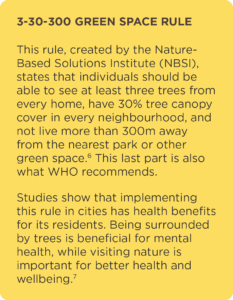The REACH legislation sets out how the European Union registers, evaluates, authorises and restricts chemicals. The sorely needed overhaul of this juggernaut of EU chemicals legislation is an opportunity to strengthen its effectiveness in protecting our health and the environment through better and earlier identification of hazardous chemicals.
Greening cities for better health
75% of the EU population lives in cities, yet most cities were built as compact areas with a high population density and few green spaces. With climate change increasingly impacting urban residents, green areas such as parks are a key solution for climate mitigation and adaptation. In addition, increasing the share of green spaces is beneficial for residents’ physical and mental health.
A new briefing, published by the EU funded research project The Urban Burden of Disease Estimation for Policy Making (UBDPolicy), to which HEAL is a partner, summarises the key health benefits of green spaces in cities and highlights best practices from 12 European cities. The briefing also includes science-based recommendations for local and European decision makers considering increasing the share of green spaces in cities.
Health benefits of green spaces
Green spaces help mitigate air pollution, heat, and noise. They therefore contribute to lower premature mortality, longer life expectancy, a reduced number of cardiovascular diseases, improved cognitive functioning in children and older people, and a healthier population overall, as physical activity is increased. As temperatures are rising, parks, gardens, and trees also play a vital role in reducing the health threats from high temperatures.
The World Health Organization (WHO) recommends that residents have access to green spaces of at least 0.5 hectares within 300m distance of their homes. In Europe, over 60% of the population currently lacks sufficient access to green spaces. Up to 43,000 deaths in European cities could be prevented if the WHO recommendation was met.

Read the full briefing in EN, BG, ES, FR, NL and PL.
Notes
The EU-funded research project Urban Burden of Disease Estimation for Policy-making (UBDPolicy), to which HEAL is a partner, aims to estimate the health and socio-economic costs and benefits of air quality, noise, lack of urban green spaces, heat and temperature, physical activity, and inequity for nearly 1,000 European cities in EU. The project aims to facilitate the stakeholder dialogue to strengthen the uptake of health impact assessments in policymaking and city planning at all levels.


